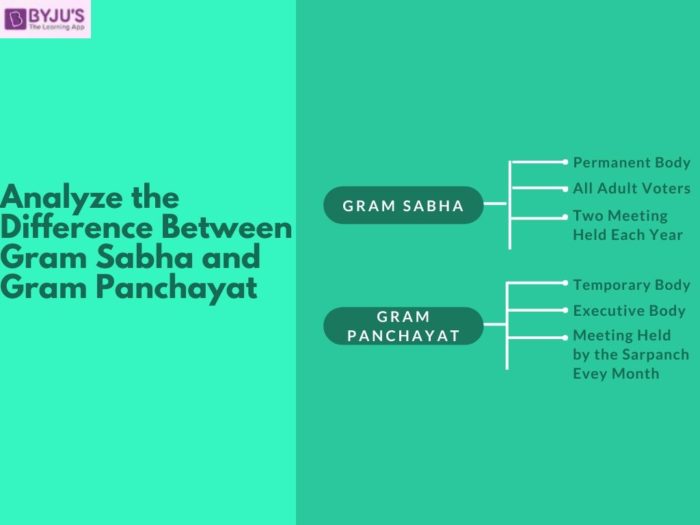Panchayati Raj in India signifies the system of rural local self-governance. It is entrusted with rural development. The Panchayati Raj is a three-tier structure consisting of the Zila Parishad, Panchayat Samiti and Gram Panchayat. The Gram Panchayat is further divided into Gram Sabha and Nyaya Panchayat/ The Panchayati Raj System was constitutionalized through the 73rd Constitutional Amendment Act of 1992 which came into effect on April 24, 1993.
Gram Sabha is the general assembly of all the people of a village, who have attained the age of 18 years and their name is entered in the voter list.
The executive committee of the Gram Sabha is known as Gram Panchayat which consists of the representatives elected by the Sabha.

This article will attempt to further highlight the key differences between the Gram Sabha and Gram Panchayat within the context of the IAS Exam.
Aspirants can find more Difference Between Articles, by checking the linked article.
The differences between a Gram Sabha and Gram Panchayat are given in the table below:
Differences between Gram Panchayat and Gram Sabha
| Gram Panchayat |
Gram Sabha |
| Gram Panchayat is the lower element of Panchayati Raj that functions at the village level with the welfare and development of the village in mind. | Gram Sabha is the legislative body that operates at the village level and takes into account the annual budget and audit reports of the Gram Panchayat. |
| It is a temporary body, as the members of the panchayat are elected for a term of five years. | It is a permanent body. |
| The Gram Panchayat consists of ward members and Sarpanch. | The Gram Sabha consists of every person whose name is registered in the voter list of the perspective village. |
| The members of the Gram Panchayat are directly elected by the members of the Gram Sabha. | The members of Gram Sabha are not elected. |
| Every month a meeting is organised by the gram panchayat. The functions of the Gram Panchayat may bifurcate as obligatory and optional functions. The obligatory functions include civic roles such as sanitation, drains and ponds. | The decisions taken by the Gram Sabha cannot be annulled by any other body. The power to do so rests with the Gram Sabha only. |
The Panchayat systems of governance are covered under the Polity segment of the UPSC Exams. The following links will help in preparing for this segment and also give more details about Panchayat Finance:
- Panchayat Finance
- Indian Polity Notes for UPSC Exams
- Polity Syllabus and Strategy for UPSC Exams
- Constitution of India
- Important Amendments In Indian Constitution
- Schedules of Indian Constitution
Difference Between Gram Sabha and Gram Panchayat- Download PDF Here
Frequently Asked Questions about Gram Sabha and Gram Panchayat
What is meant by Gram Sabha?
What is a Gram Panchayat?
Candidates can find the general pattern of the UPSC Exams by visiting the UPSC Syllabus page. For more articles and exam-related preparation materials, refer to the links given in the table below:
Related Links
Comments